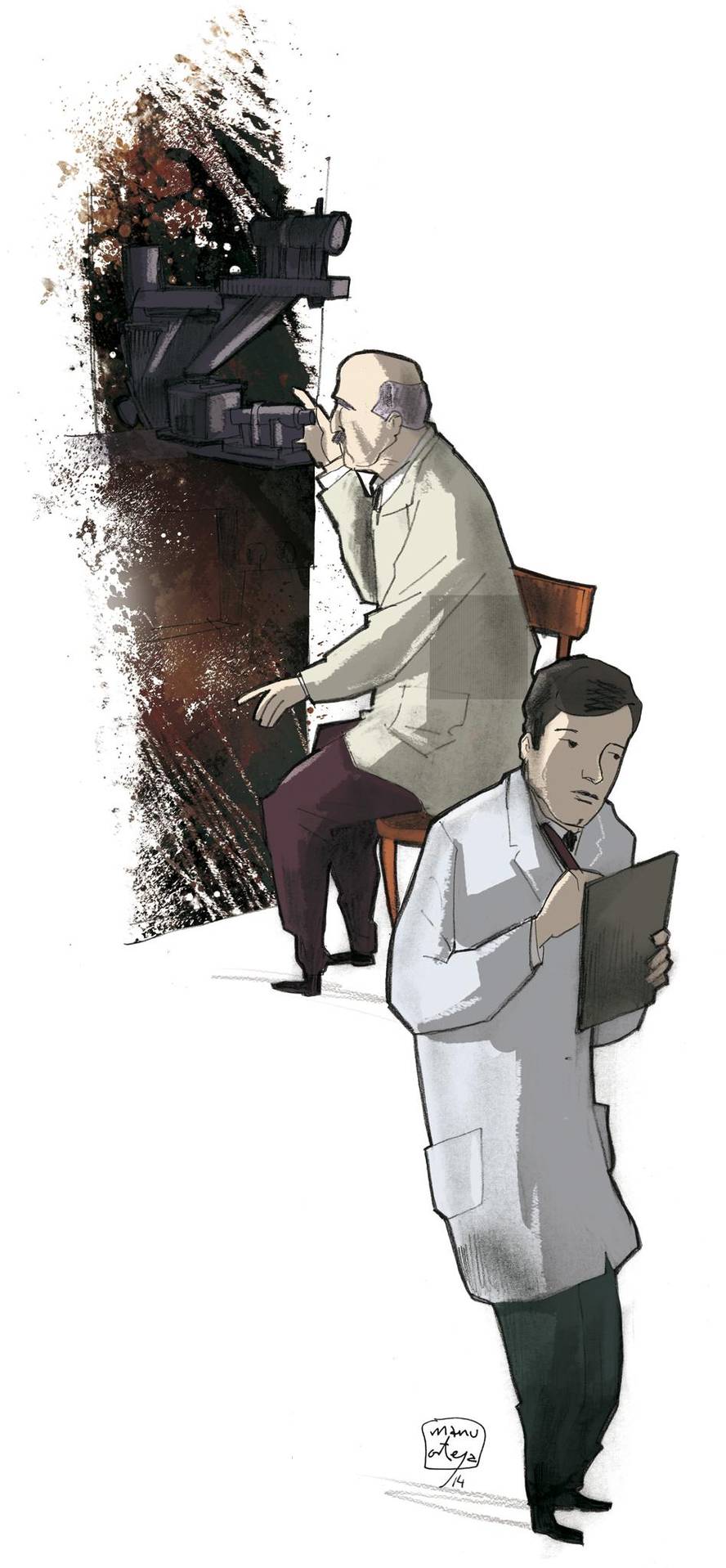Father and son Bragg looking at the crystals with X-rays
In the early summer of 1912, William Henry Bragg received a letter while on vacation with his family on the Yorkshire coast. The letter reported a lecture given by the German physicist Max von Laue. In it, Laue explained an observation by several members of the University of Munich. Bragg rises from a jump and calls his son. They said in Germany that in a zinc sulfide crystal they had detected an X-ray diffraction model. Parents and children were fascinated. That meant those mysterious X-rays were waves!
Both were physical and their relationship with X-rays was long ago. His son, William Lawrence Bragg, at age six, fell from the tricycle and broke his arm. Although it was only a year when Wilhelm Röntgen discovered X-rays, by then Lawrence's father had built an X-ray machine at the University of Adelaide (Australia). And his son's elbow X-ray was the first practical use he gave this machine.
If his father was not a physicist, Lawrence said he could be a biologist. Since he was a young man he was passionate about nature and, subsequently, his fondness for botany, gardening and astronomy. He was also a fervent collector: It became a collection of 500 species, all of them collected during their stay in Australia. He also discovered a new kind of corner: Sepia braggi .
His father was a British. The year after graduating from Trinity College Cambridge, 23, he moved to Australia, a professor of Mathematics and Experimental Physics at the University of Adelaide. Until forty years he hardly worked in research. He worked mainly on the promotion and strengthening of scientific education. The scarce resources of the University of Adelaide improve notably with the equipment built by it. He had the fame of a great communicator. "The value of a conference is not measured based on the amount of information you have access to in one hour," said W.H. Braggek--, but the listener is able to tell his wife at the next morning's breakfast."
He married in Australia and had three children. Lawrence was the oldest. Good student. The institute ended three years before normal and graduated at 18 at the University of Adelaide. That same year, in 1908, his father accepted the Cavendish chair of physics from the University of Leeds and the whole family moved to England.
Lawrence had just investigated in Cambridge when his father taught him this letter. The holidays ended there. Parents and children could not be without doing anything after they knew her. In fact, Max Laue's team saw that when crossing this crystal the X-rays were obtained a diffraction model, but they did not understand well what was really happening. Father and son spent all summer in the laboratories of Leeds performing X-ray diffraction experiments.
After the summer and back to Cambridge, the ideas were taking shape in Lawrence's head. And on November 11, at 22, he presented his results. Lawrence proposed that the results obtained by the Laue team were due to the reflection of the waves on the atomic planes of the crystal and that the information provided by the diffraction of X-rays allowed to know the arrangement of the atoms of the crystals.
His father developed the X-ray spectrometer. With this device and two articles published in 1913 applying Lawrence's theories, parents and children demonstrated that the methodology developed by them served to know the internal structure of crystals. In one of the articles Lawerence studied the structure of several crystals: sodium chloride, potassium chloride, potassium bromide and potassium iodide. In the other, father and son clarified the structure of the diamond. In the diamond it was shown that carbon atoms are united in three dimensions and then the hardness of this material was understood. At the same time, when the graphite structure was known a few years, it was understood why it is so soft, although the chemical composition of the diamond was the same.
The crystallographic research of Bragg's parents and children was interrupted by World War I in 1914. His father went to detect submarines and his son in front. Lawrence discovered in the trenches that the 1915 Physics Novel was delivered to his father and to him. He was 25 years old. It remains the youngest Nobel Prize of all time.
After the war, Lawrence held the post of Ernest Rutherford at the University of Manchester. There he worked a lot on the research of the chemical and physical properties of silicates, the most abundant minerals of the earth's crust.
In 1938 he was again the next in Rutherford directing the Cavendish laboratory of Cambridge. Here, the researcher at the Cavendish laboratory devoted himself to research biological crystals, since he considered this field to be a great future. Among other things, Max Perutz and John Kendrew discovered the structure of hemoglobin and myoglobin proteins (1962 Physics Novel), and James Watson and Francis Crick of DNA (1962 Medicine and Physiology Novel).
P.S: When Max Peruce received the 1962 Physics Novel, he confesses that he was ashamed to have received the prize before Dorothy Crowfoots. In fact, Crowfoot was a pioneer in the crystallography of biological molecules. But that's another story...






